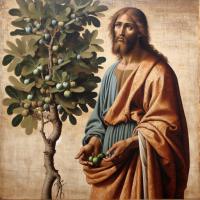
In the month of November, the liturgy draws our attention to the last things and the end of time. We will soon be celebrating the first coming of Christ; now we are reflecting on his Second Coming and the fulfilment of God’s plan. We have two examples of apocalyptic writing in the First Reading and the Gospel. The Book of Daniel was written in the second century BC, when the Jews were suffering religious persecution by Antiochus IV Epiphanes, the Greek king of the Seleucid Empire. He defiled the temple and the Jewish Book of Law was prohibited. The suffering of the faithful Jews is recounted in the Book of Macabees. However, the setting of Daniel is in the sixth century BC, when the Jews were exiled to Babylon.
The extract from Mark has been called the Little Apocalypse. Jesus seems to be describing the end of the world. It must be remembered that Mark was probably writing soon after the destruction of Jerusalem by the Romans. It was therefore a time of turmoil and suffering. Apocalyptic literature is written in figurative language. It basically describes the struggle between good and evil, leading to the triumph of good. There is an attempt to reassure the afflicted. In the Book of Daniel, Michael would be seen as a powerful leader who would protect the righteous.
Our Lord's example of the fig tree would suggest fulfilment, in that its bursting into leaf would soon be followed by it bearing fruit. In John 12:32 Jesus makes the following statement: “And I when I am lifted up from the earth I will draw all people to myself.” Our God is a God of love, not of judgement, and longs to bring everyone to their eternal home.